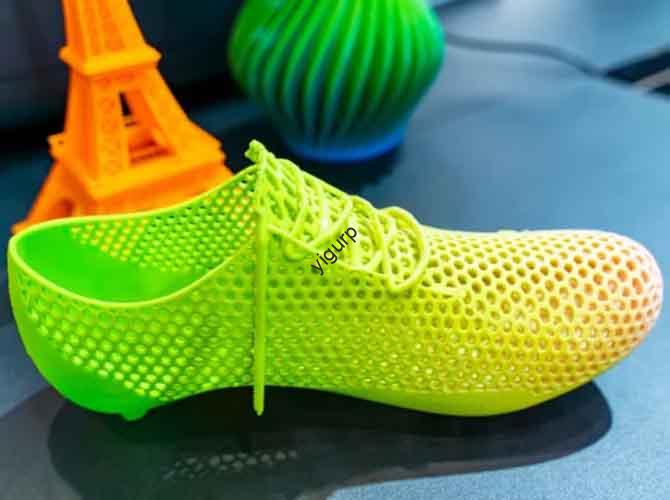In 3D Druck, choosing the right material can make or break a part’s performance. For applications needing strength, Haltbarkeit, und Vielseitigkeit, 3D Printing PA6 (Polyamid 6) fällt auf. This material solves common pain points—like fragile parts, poor wear resistance, or limited use in harsh environments—that plague other 3D printing plastics. Let’s explore its key features, reale Verwendungen, and how to overcome its few challenges.
1. Core Advantages of 3D Printing PA6: Why It Outperforms Other Plastics
3D Printing PA6 shines thanks to a unique mix of mechanical and chemical properties. Unlike basic plastics like PLA or ABS, it meets the demands of industrial applications.
Key Properties of 3D Printing PA6
| Eigentum | Einzelheiten | Benefit for Users |
| Mechanische Stärke | Hohe Zugfestigkeit (60 MPA) + Steifheit; Gute Zähigkeit (no breakage under 10 J impact) | Griff schwere Lasten (Z.B., Kfz -Klammern) |
| Resistenz tragen | Niedriger Reibungskoeffizient (0.3), 50% better than ABS | Ideal für bewegliche Teile (Lager, Getriebe) |
| Dimensionsstabilität | Schrumpfrate <1.5% after printing; maintains accuracy within ±0.1mm | Meets precision needs (Z.B., Maschinenteile) |
| Ölwiderstand | Resists mineral oils, Schmierstoffe, and hydraulic fluids | Safe for engine or industrial equipment |
| Chemische Stabilität | Withstands weak acids, Alkalis, and salts (Z.B., 5% HCl for 72 Std.) | Works in harsh chemical environments |
| Wärmestabilität | Schmelzpunkt (220° C) + Wärmeablenkungstemperatur (120° C) | Retains shape in high-heat settings (Z.B., Motorbuchten) |
Schneller Vergleich: 3D Printing PA6 vs. ABS
| Besonderheit | 3D Printing PA6 | 3D Drucken von ABS |
| Zugfestigkeit | 60 MPA | 40 MPA |
| Resistenz tragen | Geringe Reibung (0.3) | Higher friction (0.45) |
| Ölwiderstand | Exzellent | Arm (swells in oil) |
2. 3D Printing Processes for PA6: Was am besten funktioniert?
3D Printing PA6 is compatible with multiple processes, but some are better suited for its properties. The right choice depends on your part’s needs—like speed, Präzision, oder Kosten.
Common 3D Printing Processes for PA6
| Verfahren | Wie es funktioniert | Am besten für |
| Modellierung der Ablagerung (FDM) | Melts PA6 filament and extrudes it layer by layer | Kostengünstige Prototypen, simple industrial parts (Z.B., Klammern) |
| Selektives Lasersintern (Sls) | Uses a laser to sinter PA6 powder into solid parts | Komplexe Geometrien (Z.B., hollow gears), Hochvorbereitete Teile |
Für die Spitze: Enhancing PA6 with Fillers
Leistung steigern, mischen 3D Printing PA6 with fillers:
- Glasfaser: Fügt hinzu 30% more strength (Ideal für strukturelle Teile).
- Kohlefaser: Improves rigidity + reduces weight (great for aerospace components).
- Mineral Fillers: Lowers cost while maintaining basic strength (für nicht kritische Teile).
3. Anwendungen in der Praxis: Where 3D Printing PA6 Shines
From cars to factories, 3D Printing PA6 solves industry-specific problems. Let’s look at key use cases.
Industry Applications of 3D Printing PA6
| Industrie | Common Parts Made with 3D Printing PA6 | Problem Es löst |
| Automobil | Motorhalterungen, Ausrüstungsgehäuse, sensor holders | Withstands oil + hohe Temperaturen; replaces heavy metal parts (schneidet das Fahrzeuggewicht durch 15%) |
| Maschinen | Lager, Förderrollen, Ventilkomponenten | Widersetzt sich + Reibung; lasts 2x longer than ABS parts |
| Elektronik | Cable organizers, heat-resistant casings | Protects components from heat + Chemikalien |
Fallstudie: Automotive Gear Replacement
A car manufacturer needed a replacement gear for an older model. Traditional manufacturing would take 4 Wochen (Schimmel + Produktion). Verwendung 3D Printing PA6 (FDM with glass fiber), Sie:
- Designed the gear in 2 Tage.
- Gedruckt 10 Prototypen in 12 Std..
- Getestet + finalized the part in 3 Tage.
Gesamtzeit: 1 week—75% faster than traditional methods. The gear also lasted 3x longer than the original plastic version.
4. Overcoming PA6’s Challenge: Wasseraufnahme
3D Printing PA6 has one main downside: it absorbs water, which can ruin parts (causes bubbles, Warping, or weakening). But this is easy to fix with proper preparation.
Schritt für Schritt: Drying PA6 Before Printing
- Check Moisture Level: Use a moisture meter—PA6 should have <0.1% Feuchtigkeit.
- Dry the Material:
- For filament: Use a filament dryer at 80°C for 4–6 hours.
- For powder (Sls): Dry at 60°C for 8–10 hours.
- Store Properly: Keep dried PA6 in an airtight container with desiccant to prevent reabsorption.
What Happens If You Skip Drying?
- Bubbles in the printed part (ruins surface finish).
- 20–30% loss in mechanical strength.
- Warping (parts don’t fit together).
Perspektive der Yigu -Technologie
Bei Yigu Technology, Wir sehen 3D Printing PA6 as a bridge between prototyping and industrial production. Our team has tested it in 50+ client projects—from automotive brackets to machinery parts—and found it cuts production time by 60% vs. Traditionelle Methoden. We now offer custom 3D Printing PA6 Lösungen (with fillers like carbon fiber) and pre-dried materials to avoid moisture issues. Blick nach vorn, we’ll integrate AI to optimize PA6 printing parameters, making it even easier for businesses to adopt.
FAQ
- Q: How long do 3D printed PA6 parts last?
A: In industrial use (Z.B., Maschinenteile), they last 2–5 years—2x longer than ABS parts. With fillers like carbon fiber, lifespan can extend to 7+ Jahre.
- Q: Is 3D Printing PA6 more expensive than other plastics?
A: Yes—PA6 filament costs ~\(50/kg (vs. \)20/kg for ABS). Aber es spart langfristig Geld: parts last longer, so you replace them less often.
- Q: Can 3D printed PA6 parts be recycled?
A: Ja! Scrap PA6 (Unterstützung, Fehlgeschlagene Drucke) can be melted down and turned into new filament/powder. This reduces waste by 40% vs. single-use plastics.
